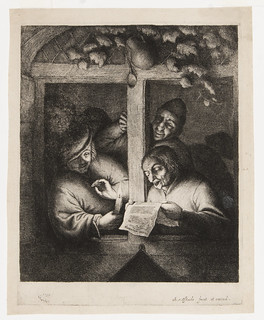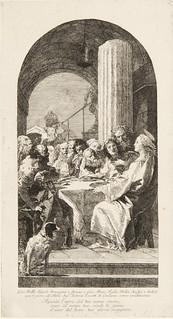Auburn's art museum plans expansion of its collection of Old Master artworks
Article body
Jule Collins Smith Museum of Fine Art is home to a growing collection of more than 2,000 works of art with strengths in American modernism. Curators are considering adding works from earlier time periods with support from Auburn alumni and the community.
A walk through the museum's galleries could give today's visitors a view of a contemporary sculpture made of knock-off Louboutin shoes opposite a landscape by Pierre-Auguste Renoir; a still-life composition made of delicate and perilously placed glass; or an Andy Warhol photograph of John Oates wearing an Auburn T-shirt. These seemingly unconnected pieces have one thing in common: how they fit together in the story of art. Each artist and movement represents a different chapter in a long history of artistic expression.
The museum has set its sights on adding a chapter from that history as it seeks to build its permanent collection. With a goal of collecting works from the same historic era as the traveling exhibition "Rembrandt, Rubens, Gainsborough, and the Golden Age of Painting in Europe," curators at Auburn's art museum are proposing Old Master works on paper this fall as a part of the annual "1072 Society Exhibition," now on view through Jan. 25.
The 1072 Society is a donor organization that supports the museum's efforts to build the permanent collection. Each year, a varied selection of art is brought in to be considered for purchase.
A selection of 10 works of art is on display in the "1072 Society Exhibition," and with support of the society's donors, some or all of these pieces may enter the permanent collection to expand holdings in this under-represented area.
The society's initial strategy for collecting art was to bring in as many different artistic voices as possible, but as the organization grew, curators sought to enhance existing collections or to develop a new strength, such as prints and drawings from the 17th and 18th centuries.
"By exhibiting artists from this earlier period, we can show where these 19th, 20th and 21st-century artists came from, whether they are following in the footsteps of these artists, advancing what they did or in many cases rebelling against what they did," said Dennis Harper, curator of collections and exhibitions. "Seeing the works first hand is more beneficial than looking at reproductions in a book or on a computer screen because there is a texture, surface and richness of color that you can't see even in the best photograph. You really feel the artist's touch."
Membership officer Cindy Cox said there is a demonstrated annual increase in alumni and community participation in the 1072 Society since it began in 2008. Members of the 1072 Society contribute an amount beginning at $1072, a tribute to the amount paid in 1948 for Auburn's first major art acquisition, 36 modernist paintings from the Advancing American Art U.S. State Department exhibition. To date, the efforts of campus and community through the 1072 Society have resulted in the purchase of 18 works of art.
Many of these acquisitions are currently on extended view alongside other popular works in the museum's Chi Omega-Hargis Gallery, including "Downtown Goddess," by Willie Cole and "Curvae in Curvae" by Beverly Pepper, both secured with funds from the 1072 Society Class of 2014. Permanent collection exhibitions complement traveling exhibitions, and Auburn students and community docents use different works for public programs and tours for more than 30,000 visitors annually.
Items from the permanent collection are also loaned to other institutions. Yasuo Kuniyoshi's "Circus Girl Resting," from the Advancing American Art collection, will be a part of a major retrospective on the artist during spring and summer of 2015 at the Smithsonian American Art Museum in Washington, D.C.
"The museum's collection will never exactly be an A-to-Z art history reference considering the competitive art marketplace," said Marilyn Laufer, museum director, who researched available works with Harper and networked with gallery owners in New York City. "We collect thoughtfully on behalf of Auburn and evaluate how to build areas of excellence for in-depth study."
A public reception is planned for Thursday, Nov. 13 at 5 p.m., when guests may discuss this year's offerings with museum staff and find out more information about charitable, tax-deductible gifts made through the Auburn University Foundation in support of Jule Collins Smith Museum of Fine Art. Donors, alumni and friends can make a philanthropic gift in support of the museum's collection-building efforts, like the 1072 Society, by contacting Cindy Cox, membership officer, at (334) 844-3005, or by visiting www.jcsm.auburn.edu/support. To learn more about the various means of donating to Auburn University, visit https://develop.auburn.edu/how/.
Jule Collins Smith Museum of Fine Art, Auburn University is accredited by the American Alliance of Museums, a distinction held by less than six percent of the nation's museums. For additional information about the museum's upcoming exhibitions and programs, visit jcsm.auburn.edu or call (334) 844-1484.
Related Media
Related Links
Media interested in this story can contact Communications Director Preston Sparks at (334) 844-9999 or preston.sparks@auburn.edu.
Auburn University is a nationally ranked land grant institution recognized for its commitment to world-class scholarship, interdisciplinary research with an elite, top-tier Carnegie R1 classification, life-changing outreach with Carnegie’s Community Engagement designation and an undergraduate education experience second to none. Auburn is home to more than 30,000 students, and its faculty and research partners collaborate to develop and deliver meaningful scholarship, science and technology-based advancements that meet pressing regional, national and global needs. Auburn’s commitment to active student engagement, professional success and public/private partnership drives a growing reputation for outreach and extension that delivers broad economic, health and societal impact.







